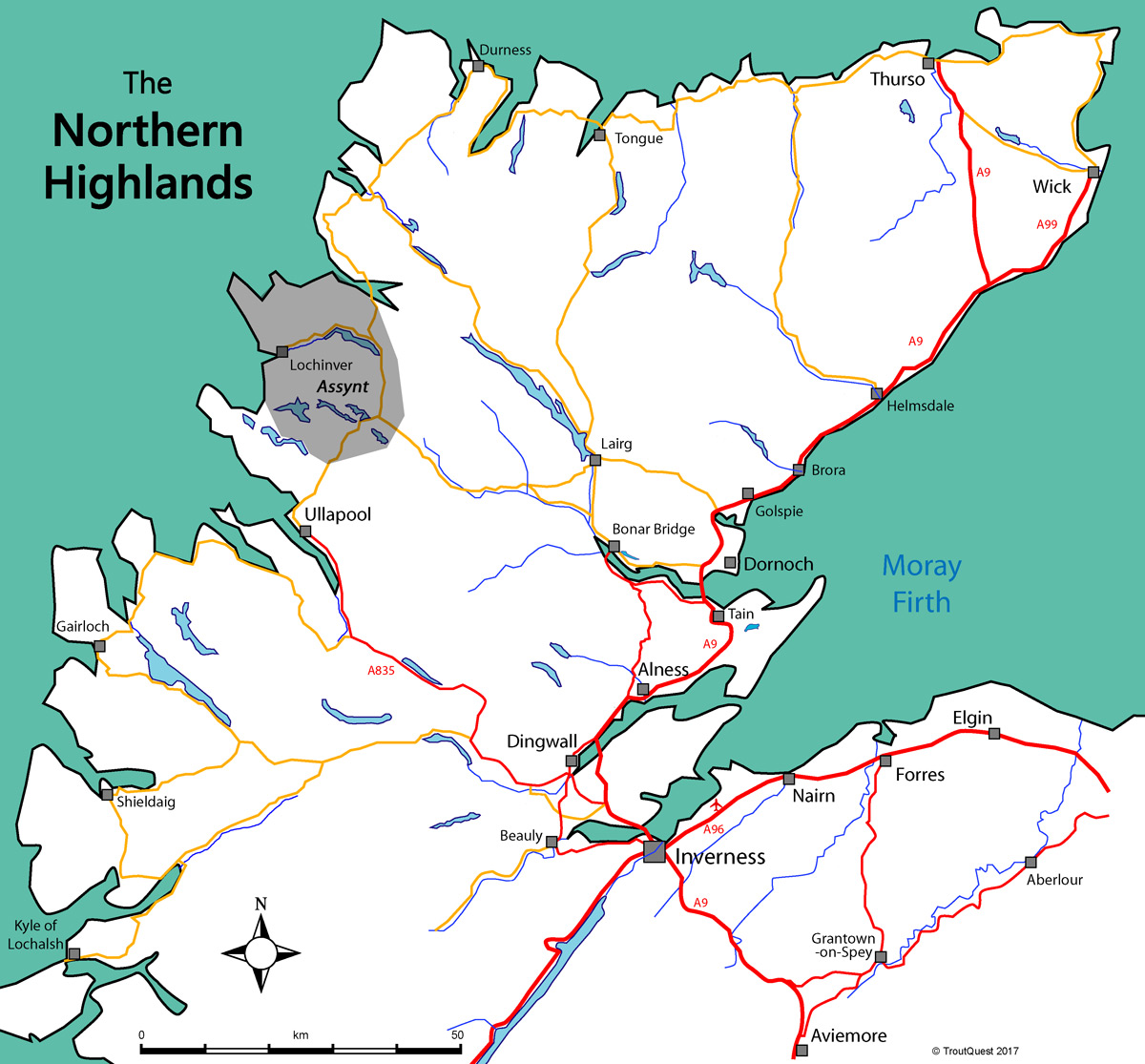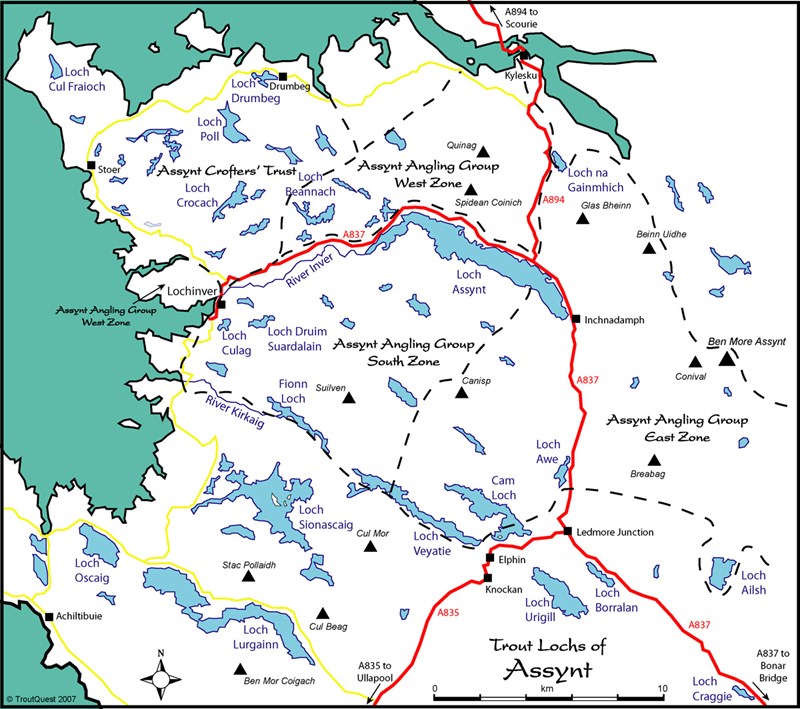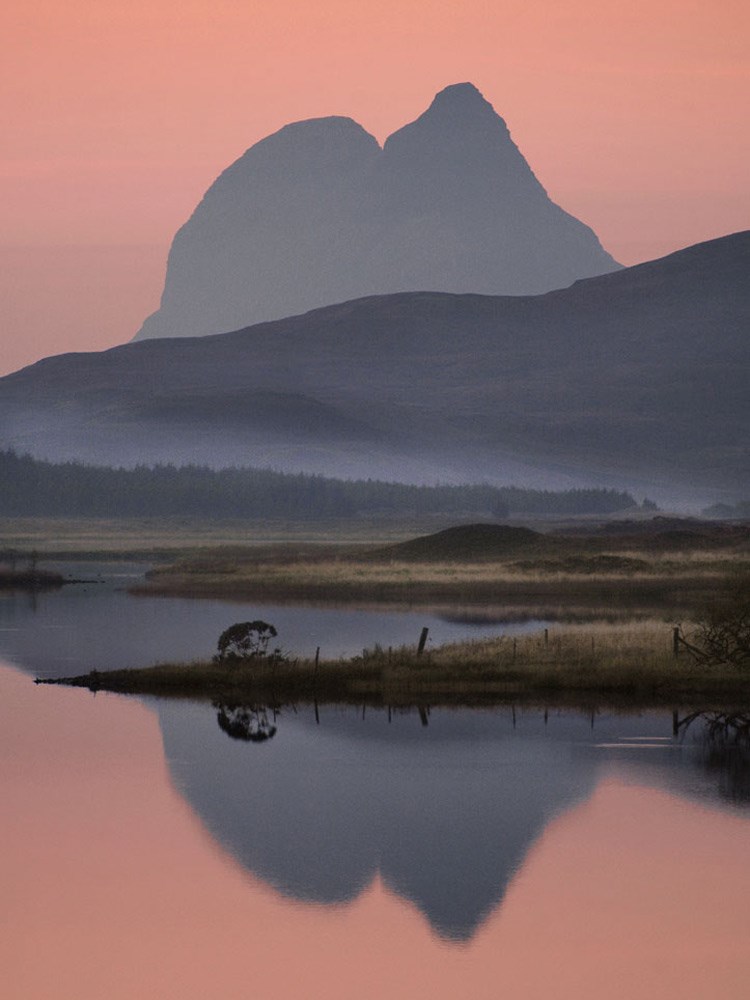The Assynt area offers some of the most spectacular scenery in the Northern Highlands, and countless lochs holding wild brown trout. There are also two spate rivers, the Inver and Kirkaig, running west to the sea that allow the passage of salmon and sea trout through some of these lochs.
Most of the brown trout fishing in Assynt north of Elphin is controlled by two organisations: the Assynt Crofters' Trust and the Assynt Angling Group who provide excellent access arrangements for visiting anglers.
To the south of Lochinver, most of the fishing is controlled by the Assynt Angling Group, a partnership between the local angling club and a number of estates. This is a large area comprising over 150 lochs and is divided into 3 fishing zones (West, East & South). Boats are available on 20 of the AAG lochs.
The Assynt Crofters’ Trust controls about 200 lochs north of Lochinver, with boat hire offered on 9 of them. The ACT and AAG both sell 'roving' bank fishing permits allowing visiting anglers to fish the whole area on a single permit.
For more detailed information, Assynt Angling maintains an excellent website, which provides all the information you could need to fish the ACT and AAG lochs, including an interactive map.
NB: Zone boundaries have changed since this map was created, please check Assynt Angling's website for the latest information.
Local estates also offer boats directly on some of the larger lochs such as Veyatie, Cam, Urigill and Sionascaig.
The fishing in the Assynt area is generally characterised by large catches of very hard-fighting small trout, typically weighing 2 or 3 to the pound, but on most lochs there are also reasonable stocks of better fish around the pound mark, with a few fish of 4 lb+ caught each season. A number of lochs also have Arctic char and ferox brown trout.
The Inchnadamph area is famous geologically for outcrops of the Durness Limestone and many lochs have limestone spring sources. As a consequence, a number of lochs enjoy a mayfly hatch in June and early July, and this can provide some excellent sport.
There are too many lochs to mention here, never mind fish, but here are some brief descriptions of a few of the larger ones:
Loch Veyatie
Veyatie is one of the largest lochs in the area; 4 miles long, running north-west to south-east. It is generally only 200-500m in width with steep sides, dominated by the peaks of Suilven to the north-west and Cul Mor to the south-west – a spectacular place to fish. The centre-line of the loch is deep at 20-30m, and the most productive fishing is along the shore lines and in the shallow bays. Brownies averaging ½ lb are the norm, but there are occasional larger fish of a pound or more and the loch is also renowned for ferox. Great sport can be had during the mayfly hatch with patterns such as French partridge wets and Grey Wulffs.
Loch Cam
Cam is another large loch with a length of 3.3 miles and an area of 633 acres. It reaches depths of over 30m towards the north-west end. The loch can be divided into 2 areas. The main part of the loch offers some long drifts along the north & south shores, but is exposed and can become unfishable in high winds.The south end of the loch, conveniently closest to the moorings at the cemetery, is often sheltered offering great drifts over shallow water, particularly around the islands. Trout are generally in the ½-¾ lb range, and char are also caught frequently.
Loch Urigill
Urigill lies at the top of the chain of Urigill-Cam-Veyatie. It is a sizeable loch of 483 acres, with a length of 1.8 miles north-west to south-east. It is a shallow loch, rarely exceeding 5m in depth. The best fishing is at the south-east end near the inlet burns and around the islands. Expect large ‘baskets’ of trout of 2 or 3 to the pound, but there are some much bigger fish in the loch also.
Loch Borrolan
Borrolan is a roadside loch that also drains into Loch Cam via the Ledmore River. It is a shallow loch full of obliging trout, typically 2 or 3 to the pound, but with a good number of fish in the 1-2 lb class also. It can be fished from the bank as well as by boat.
Loch Awe
A loch of 1 mile in length, Awe has a surface area of 80 acres and is generally shallow, with a number of islands making it very scenic. Large numbers of ½lb + trout, and a few larger ones. Salmon also enter the loch.
 If you find this page informative, check out HiFly Fishing; our subscription-based website. The HiFly map has much wider coverage including Moray, Lochaber, Orkney, Skye, Mull & the Outer Hebrides with more than 5 x the number of fisheries.
If you find this page informative, check out HiFly Fishing; our subscription-based website. The HiFly map has much wider coverage including Moray, Lochaber, Orkney, Skye, Mull & the Outer Hebrides with more than 5 x the number of fisheries.
In addition, the HiFly website has 5 x more fishery listings than displayed here. There are also >120 videos, including loch fly-overs such as in this clip ...















